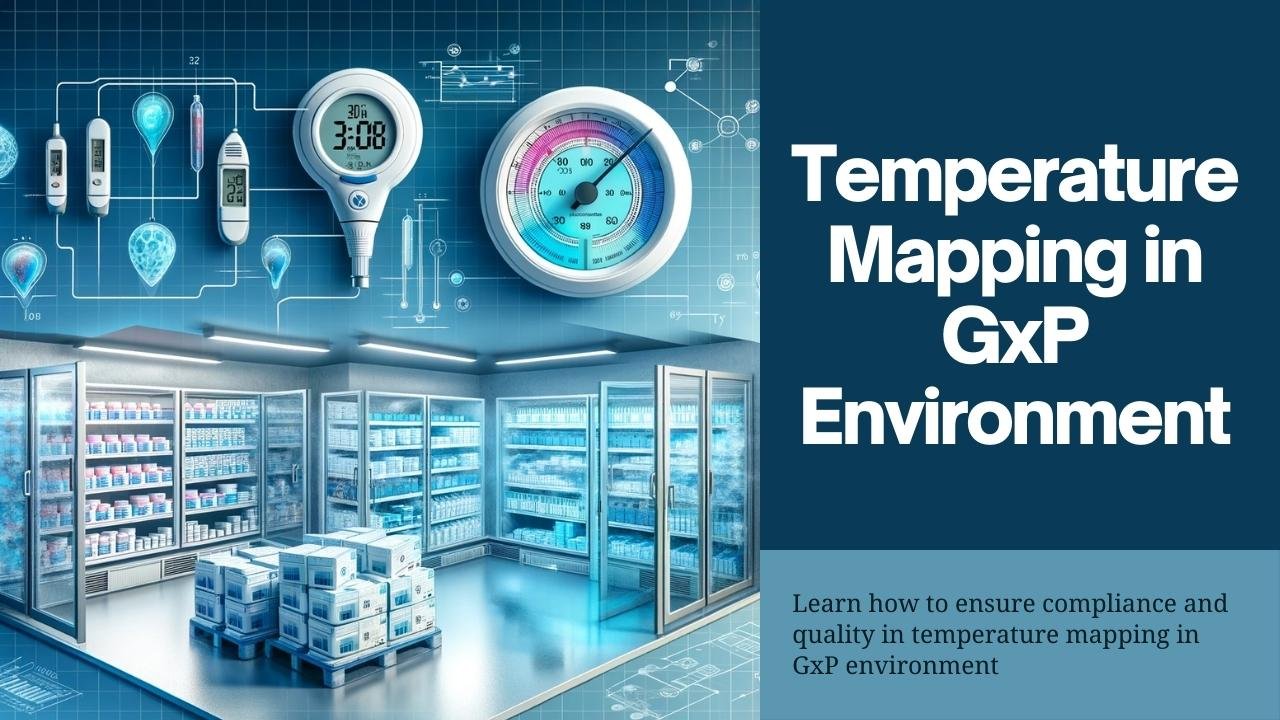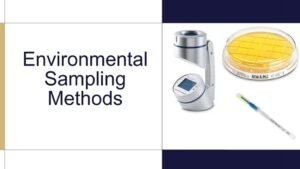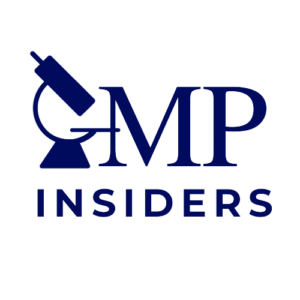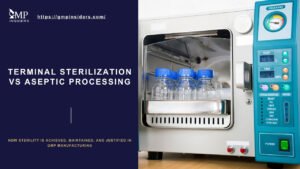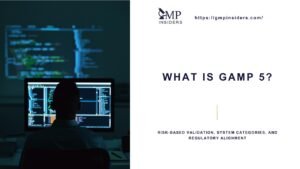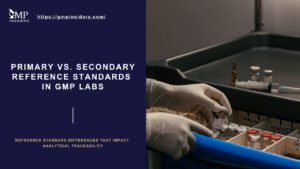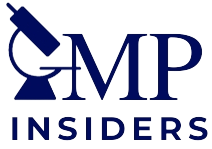Temperature mapping plays a crucial role in ensuring the integrity and safety of temperature-controlled environments in regulated industries such as pharmaceuticals and biotech.
In this article, we will explore the key aspects of temperature mapping, including its definition, importance, and the process of conducting a temperature mapping study. We will also discuss the equipment and considerations involved, as well as the qualifications and certifications required for temperature mapping contractors. So, let’s dive in and unravel the essential elements of temperature mapping in the GxP.
What is Temperature Mapping?
Temperature mapping, also known as thermal mapping, is the process of assessing and documenting the temperature distribution within a temperature-controlled environment or process. It involves measuring and recording multiple data points at various locations within the defined area over a specific duration.
The goal of temperature mapping is to identify temperature variations and fluctuations within the controlled environment to ensure compliance with regulatory requirements and product quality standards.
Temperature mapping is typically performed in various temperature-controlled units, including freezers, refrigerators, incubators, stability chambers, warehouses, and autoclaves. By conducting a temperature mapping study, organizations can determine the temperature profile of these units, identify potential hot and cold spots, and assess the uniformity of temperature distribution.
Why Perform Temperature Mapping?
Temperature mapping is of utmost importance in industries where the storage or processing of temperature-sensitive products is critical. In regulated environments such as pharmaceuticals and biotech, adherence to temperature control requirements is essential to maintain product efficacy, stability, and safety.
Temperature mapping helps organizations ensure that their storage areas, equipment, and processes meet the necessary temperature specifications and maintain the integrity of the stored products.
Non-compliance with temperature control requirements can lead to various issues, including product degradation, loss of potency, reduced shelf life, and compromised patient safety. For instance, in the pharmaceutical industry, certain drugs and vaccines require specific temperature ranges to maintain their efficacy. Please comply with these temperature requirements to ensure the products are effective and beneficial to patients.
By conducting temperature mapping studies, organizations can identify potential temperature deviations, optimize storage conditions, and mitigate the risks associated with temperature variations. This proactive approach helps ensure regulatory compliance, product quality, and customer satisfaction.
When to Perform Temperature Mapping?
Temperature mapping should be performed in several scenarios:
- New Equipment Installation: When new critical equipment, such as an autoclave or refrigerator, is installed, a standard qualification process is initiated. Temperature mapping is an essential part of this qualification process to ensure that the equipment functions as expected and maintains the required temperature range.
- Repaired Equipment: After repairing a unit, it is crucial to test and validate its performance, including temperature control. Temperature mapping is performed to ensure that the repaired equipment functions properly and meets the required temperature specifications.
- Relocated Equipment: Moving a unit from one location to another can impact its performance. Temperature mapping is necessary after relocation to ensure that the unit’s temperature control remains within the specified limits.
- Periodic Continuous or Re-qualification: Regular re-qualification of temperature-controlled units is necessary to ensure ongoing compliance. The frequency of re-qualification varies based on the type of equipment and industry requirements. Autoclaves may require annual re-qualification, while storage areas like warehouses may be re-qualified every few years.
- Testing Based on Environmental Conditions: Storage areas, such as warehouses, can be significantly affected by external environmental conditions. Seasonal temperature variations, such as extreme heat in summer or cold in winter, can impact the temperature distribution within the storage area. It is essential to perform temperature mapping based on these environmental conditions.
How to Perform Temperature Mapping
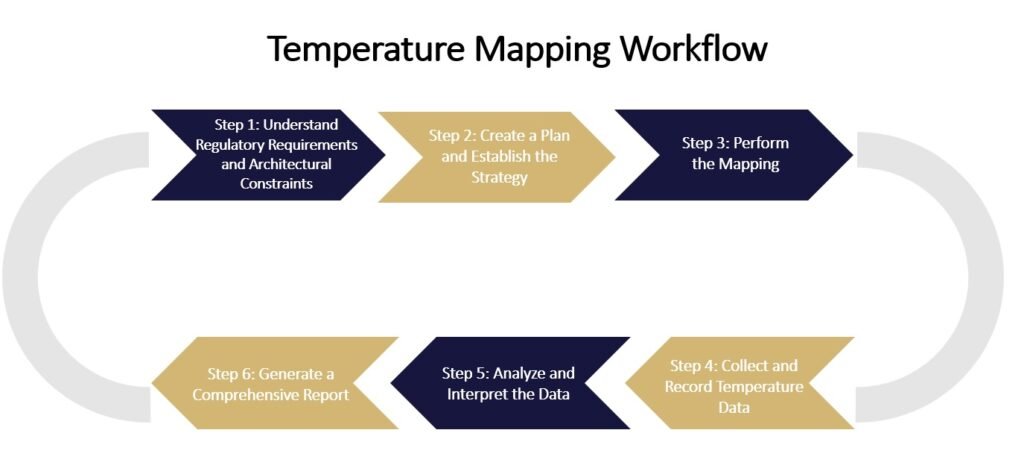
Performing a temperature mapping study involves several steps:
Step 1: Understand Regulatory Requirements and Architectural Constraints
Before initiating the temperature mapping process, it is crucial to understand the regulatory requirements specific to the industry and the architectural constraints of the facility. Some key considerations include:
- Calibration: Evaluate the calibration of temperature control and monitoring devices to ensure accuracy and traceability to national or international standards.
- Environmental Range and Set Point: Specify the environmental range based on the temperature-sensitive products stored in the area. Consider variable set points for different seasons and external climate conditions.
- Source of Heating and Cooling Components: Identify sources of temperature variability, such as fans, windows, racks, vents, and diffusers, that can affect the temperature distribution within the area.
Pro Tip: Before starting temperature mapping, familiarize yourself with the relevant regulatory standards and assess your facility’s specific architectural features that might influence temperature distribution, such as the location of heating and cooling sources. This foundational step ensures your mapping strategy is both compliant and tailored to your environment’s unique characteristics.
Step 2: Create a Plan and Establish the Strategy
In this step, you will develop a detailed plan and protocol for the temperature mapping study. This includes identifying the specific equipment and areas to be mapped, determining the number and type of temperature sensors required, and creating a schedule for data collection. It is crucial to ensure that all necessary equipment and resources are available and properly calibrated before the start of the study.
- Risk Assessment: Identify potential risks within the storage area and determine the mapping requirements based on the criticality of the stored products.
- Mapping Strategy: Determine the number and type of temperature sensors, their locations, and the set point values. Consider additional tests, such as door opening, power failure, and pull-down tests, based on the specific requirements.
- Protocols and Documentation: Write mapping protocols, including Installation Qualification (IQ), Operational Qualification (OQ), and Performance Qualification (PQ). Document the rationale for sensor locations and create a visual map of their placement.
Pro Tip: Leverage a dynamic mapping strategy that integrates real-time data analytics to adjust sensor deployment and testing protocols, ensuring robust adaptability to both expected and unforeseen environmental variations.
Step 3: Perform the Mapping
The next step is to install and position the temperature sensors within the defined area. The sensors should be strategically placed to capture temperature variations accurately and representatively.
Consider factors such as airflow patterns, potential hot and cold spots, and the location of critical products or materials. Ensure that the sensors are properly labeled and identified for easy reference and data collection.
- Sensor Placement: Distribute temperature sensors throughout the storage area in a uniform manner, considering all three dimensions. Ensure accurate identification and labeling of each sensor.
- Empty Mapping: Conduct an initial mapping test with the storage area empty to establish a temperature profile and identify potential areas of temperature deviation.
- Loaded Mapping: Perform mapping tests with the area loaded to simulate real-life conditions. This helps assess temperature uniformity and identify any hot or cold spots.
- Additional Tests: Conduct specific tests, such as door open, power failure, pull-down, and recovery tests, to evaluate the system’s response under different scenarios.
Pro Tip: Maximize the effectiveness of your temperature mapping by integrating advanced data analytics tools for real-time monitoring and adjustment, ensuring the most accurate and comprehensive environmental assessment.
Step 4: Collect and Record Temperature Data
Once the temperature sensors are in place, data collection can begin. The sensors will continuously measure and record the temperature at their respective locations. It is essential to adhere to the predetermined schedule and duration of data collection to capture a comprehensive temperature profile.
- Initiate Data Collection: Start gathering temperature data as per the schedule, using strategically placed sensors.
- Continuous Monitoring: Ensure sensors are operational and recording temperature continuously to capture variations.
- Adherence to Schedule: Follow the planned duration and frequency of data collection to obtain a complete temperature profile.
Pro Tip: Utilize cloud-based temperature monitoring platforms for efficient data collection and analysis, allowing for immediate alerts and adjustments, and enhancing the reliability of your temperature mapping process.
Step 5: Analyze and Interpret the Data
After the data collection phase, the recorded temperature data needs to be analyzed and interpreted. This involves reviewing the data for any temperature deviations, identifying hot and cold spots, and assessing the overall temperature distribution within the mapped area. Advanced data analysis techniques, statistical methods, and visualization tools can be utilized to gain meaningful insights from the collected data.
- Review Temperature Data: Examine the collected data for any anomalies or deviations from expected temperature ranges.
- Identify Variability: Pinpoint hot and cold spots within the mapped area to understand spatial temperature distribution.
- Utilize Advanced Tools: Apply statistical methods and data visualization tools to analyze temperature patterns and trends for insightful conclusions.
Pro Tip: Leverage machine learning algorithms for predictive analysis to not only interpret current temperature data but also forecast potential future deviations, enhancing proactive environmental control strategies.
Step 6: Generate a Comprehensive Report
Based on the data analysis, a detailed report should be generated summarizing the findings of the temperature mapping study. The report should include a comprehensive overview of the study’s objectives, methodology, data analysis, identified temperature deviations, recommendations for corrective actions, and any additional observations or insights.
- Summarize Findings: Compile key outcomes, highlighting temperature deviations and uniformity.
- Methodology Overview: Detail the steps taken during the mapping, including sensor placement and data collection techniques.
- Data Analysis Summary: Present analyzed results, incorporating graphs and statistical evidence of temperature distribution.
- Corrective Recommendations: Offer actionable advice based on identified issues to improve temperature control.
- Additional Insights: Include any unexpected findings or observations that may benefit future mapping efforts.
Pro Tip: Incorporate interactive elements like dashboards in your report to provide stakeholders with dynamic access to data and findings, allowing for deeper engagement and understanding of temperature mapping results and implications.
Regulatory Requirements
Regulatory requirements for temperature mapping are outlined by various authorities to ensure product safety and quality in industries such as pharmaceuticals, food, and healthcare. Some of the key regulatory requirements for temperature mapping include:
FDA (U.S. Food and Drug Administration)
For pharmaceuticals, the FDA requires compliance with current Good Manufacturing Practices (GMP), which includes ensuring proper storage conditions for temperature-sensitive products. Temperature mapping is part of validating that storage areas maintain temperatures within specified limits.
One key document that outlines the expectations for manufacturing practices, including aspects related to temperature control and monitoring, is Title 21 of the Code of Federal Regulations (CFR) Part 211 – Current Good Manufacturing Practice for Finished Pharmaceuticals. This section covers a wide range of GMP requirements, including those related to the proper storage and handling of products to ensure their quality and safety.
Moreover, the FDA provides guidance documents such as “Guidance for Industry, Q7A Good Manufacturing Practice Guidance for Active Pharmaceutical Ingredients“, which details GMP for the manufacturing of active pharmaceutical ingredients (APIs), touching upon aspects relevant to temperature control and potentially mapping.
EMA (European Medicines Agency)
The European Medicines Agency (EMA) emphasizes the importance of Good Distribution Practice (GDP) for medicinal products through its guidelines, ensuring that the quality and integrity of medicines are maintained throughout the supply chain.
The legal framework and guidance for GDP within the European Union are established by Directives 2001/83/EC and Regulation 2019/6, along with specific guidelines on GDP of medicinal products for human use and active substances.
Temperature control and monitoring, including the need for temperature mapping, is a critical aspect of these guidelines. The GDP guidelines suggest that temperature mapping exercises should be carried out under representative conditions, stressing a risk-based approach to ensure appropriate resource use and emphasis on areas with high risk to product quality.
This includes initial temperature mapping of storage areas before use, calibration of equipment used to monitor environmental conditions at defined intervals based on risk and reliability assessments, and determining the scope and extent of qualification and/or validation activities through a documented risk assessment approach.
Read more about GDP in our article: Good Distribution Practice – GDP in the Pharmaceutical Industry.
WHO (World Health Organization)
WHO guidelines for the storage and transport of temperature-sensitive pharmaceutical products also recommend temperature mapping to ensure that products are not exposed to temperatures outside their permissible range.
The WHO Technical Report Series, No. 961, 2011, includes Annex 9, Supplement 8, focusing on temperature mapping of storage areas. This document provides guidelines for the storage and transport of time- and temperature-sensitive pharmaceutical products, emphasizing the necessity of temperature mapping to ensure that these products are not exposed to conditions outside their permissible range.
USP (United States Pharmacopeia)
The United States Pharmacopeia (USP) provides standards for environmental control, including temperature and humidity, in various chapters, with some of the most relevant being:
- USP Chapter <1079> Good Storage and Shipping Practices: This chapter offers guidance on the proper storage conditions for pharmaceuticals, which may include considerations for temperature and humidity to ensure drug stability and efficacy. While not mandating temperature mapping explicitly, adhering to these standards often requires performing temperature mapping exercises to validate that the storage environments meet USP specifications.
- USP Chapter <1118> Monitoring Devices—Time, Temperature, and Humidity: This chapter discusses the technology, performance, and verification of monitoring devices used to measure time, temperature, and humidity. It provides recommendations on the selection and validation of devices that can be used in temperature mapping studies to ensure environmental conditions are continuously monitored and controlled within specified limits.
- USP Chapter <797> Pharmaceutical Compounding – Sterile Preparations: Although primarily focused on compounding sterile preparations, this chapter outlines requirements for maintaining specific environmental conditions, including temperature and humidity controls, within compounding facilities. Compliance with these guidelines can involve temperature mapping to demonstrate that the compounding environment is maintained within the required conditions.
These regulatory bodies provide a framework for temperature mapping to ensure that all temperature-sensitive products are stored, handled, and transported in a manner that preserves their quality, safety, and efficacy. Compliance with these regulations is crucial for manufacturers, distributors, and storage facilities to avoid product loss, recalls, and potential harm to consumers.
ICH (International Council for Harmonisation)
The International Council for Harmonisation (ICH) offers guidelines like Q1A(R2) on stability testing which, while not directly mandating temperature mapping, necessitate evidence that products have been stored under appropriate conditions. This indirectly supports the need for temperature mapping to validate storage and testing environments, ensuring they meet specified conditions for the stability of pharmaceutical products.
Risk Assessment in Temperature Control
Risk assessment in temperature control is a systematic process aimed at identifying and evaluating potential hazards that could impact the stability and quality of temperature-sensitive products. This involves analyzing the entire temperature-controlled system to pinpoint areas vulnerable to temperature deviations.
Factors considered include the design and operational capabilities of storage units, the likelihood of equipment failures, and the potential for human error. Regulatory requirements play a crucial role, necessitating compliance with specific guidelines and standards to ensure product safety and efficacy.
The assessment leads to the development of mitigation strategies, including the implementation of monitoring systems, regular maintenance schedules, and the establishment of emergency protocols to manage temperature excursions effectively. This proactive approach helps in minimizing risks, ensuring product integrity, and maintaining regulatory compliance.
The analysis of the temperature-controlled environment involves a detailed review of the systems and procedures that maintain specific temperature conditions. This process includes:
- Equipment Evaluation: Assessing the performance and reliability of cooling and heating systems, insulation quality, and the effectiveness of temperature monitoring devices. This ensures that the equipment can maintain the required temperature ranges under all operational conditions.
- Storage Conditions: Review the layout and design of the storage area to identify areas prone to temperature fluctuations. This might include spots near doors, windows, or poorly insulated walls.
- Handling Procedures: Evaluating how products are moved into, within, and out of the temperature-controlled environment to minimize exposure to adverse conditions. This includes the time products spend outside of controlled temperatures during receiving, distribution, or processing.
- Critical Control Points Identification: Pinpointing specific points in the temperature control system where a failure could lead to significant temperature deviations. This could include points of equipment failure, human error, or external environmental impacts.
- Impact Assessment: Determining the potential effects of identified risks on product quality, including the degradation of products, loss of efficacy, or safety concerns for end-users.
Here is an example of risk assessment in temperature mapping:
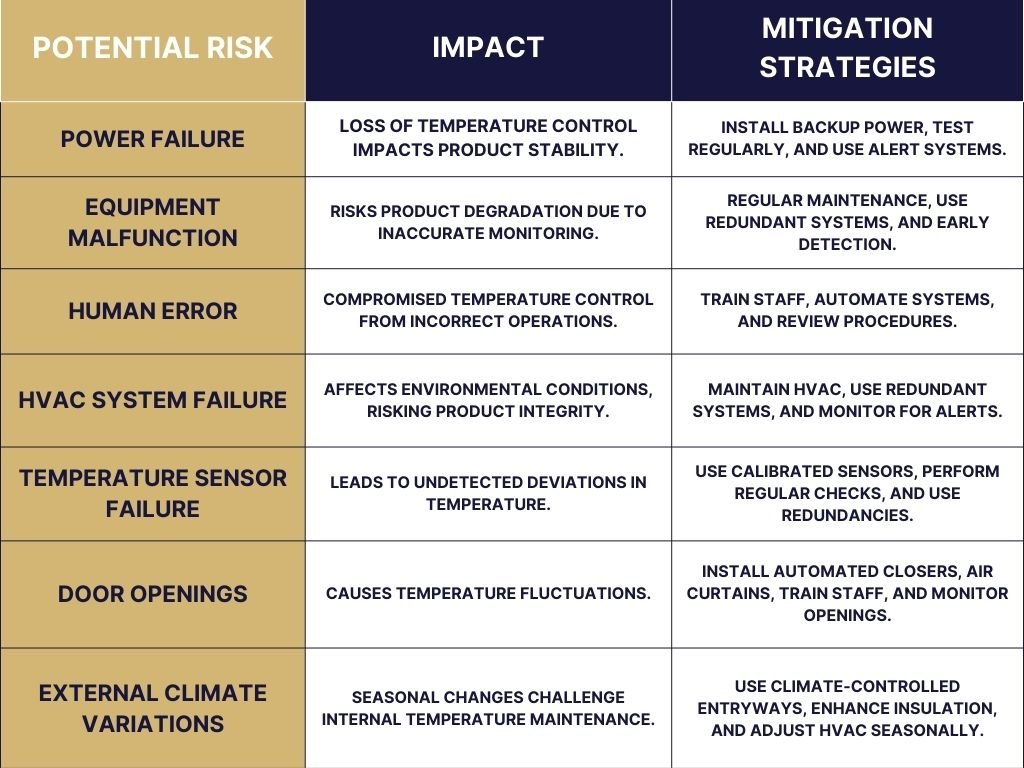
By conducting this thorough analysis, organizations can implement targeted measures to mitigate identified risks, ensuring the integrity and safety of temperature-sensitive products.
If you want to learn more about Quality Risk Management, read our article covering the topic.
Failure Modes
Identifying potential failure modes in temperature control and mapping is crucial for ensuring the integrity and safety of temperature-sensitive products. These failure modes can significantly impact the ability to maintain consistent temperature conditions:
- Power Failures: Power outages can cause the temperature regulation systems to shut down, leading to uncontrolled temperature variations. The risk is particularly acute in areas dependent on continuous power for refrigeration or heating. Backup power solutions, like generators, and contingency plans are crucial to mitigate this risk.
Pro Tip: Install uninterruptible power supply (UPS) systems or backup generators to maintain critical equipment operational during outages.
- Door Openings: The act of opening and closing doors, especially in high-traffic storage areas, can introduce significant temperature fluctuations. This can be exacerbated by the frequency and duration of door openings, which allow external air to affect the controlled environment. Implementing procedural controls, such as limiting access or using rapid-closing doors, can help minimize this impact.
Pro Tip: Implement automatic door closers, strip curtains, and air curtains to minimize the influx of external air during door openings.
- Equipment Failures: This encompasses a range of issues, from the breakdown of HVAC systems to malfunctioning sensors and controllers. Regular maintenance and calibration of equipment are essential preventive measures. Additionally, implementing a robust monitoring system can help detect early signs of equipment failure, allowing for timely corrective actions.
Pro Tip: Establish a regular maintenance schedule for all temperature control equipment, including periodic calibration of sensors and inspection of HVAC systems.
These failure modes highlight the importance of comprehensive risk management strategies, including preventive maintenance, continuous monitoring, and emergency preparedness, to ensure the integrity of temperature-controlled environments.
Lorem ipsum dolor sit amet, consectetur adipiscing elit. Ut elit tellus, luctus nec ullamcorper mattis, pulvinar dapibus leo.
Types of Equipment Requiring Temperature Mapping
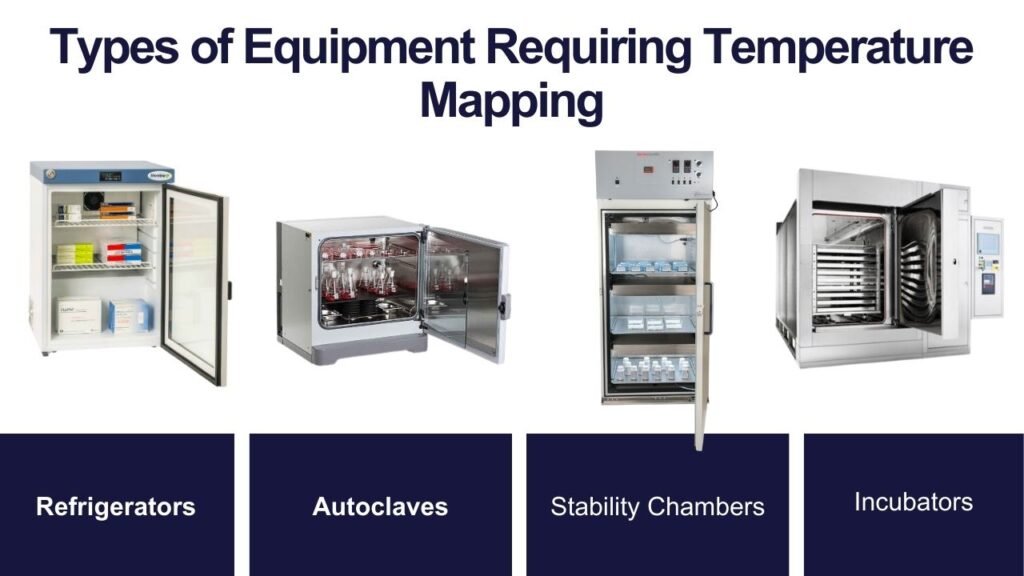
Temperature mapping is necessary for various types of equipment and storage areas in regulated industries. Here are some common examples of equipment that require temperature mapping:
- Freezers: Freezers used for storing temperature-sensitive products, such as vaccines, blood samples, or pharmaceuticals, require temperature mapping to ensure proper temperature control and prevent product degradation.
- Refrigerators: Similar to freezers, refrigerators used for storing medications, vaccines, or other perishable items need temperature mapping to verify temperature uniformity and compliance with storage requirements.
- Incubators: Incubators used in laboratories or medical facilities for growing and maintaining cell cultures or conducting experiments often require temperature mapping to ensure the desired temperature stability and accuracy.
- Stability Chambers: Stability chambers used for long-term storage of pharmaceuticals, cosmetics, or other products under controlled temperature and humidity conditions should undergo temperature mapping to validate their performance and compliance with regulatory standards.
- Warehouses: Temperature-controlled warehouses storing temperature-sensitive products, such as food items or pharmaceuticals, require temperature mapping to assess temperature distribution, identify potential temperature deviations, and optimize storage conditions.
- Autoclaves: Autoclaves used for sterilization processes in healthcare facilities or laboratories need temperature mapping to ensure that the desired temperature and pressure levels are achieved and maintained throughout the sterilization cycle.
These are just a few examples of the equipment and areas that require temperature mapping. The specific equipment and storage areas to be mapped may vary depending on the industry, regulatory requirements, and the nature of the stored products or materials.
What Types of Validation Equipment is Used for Temperature Mapping?
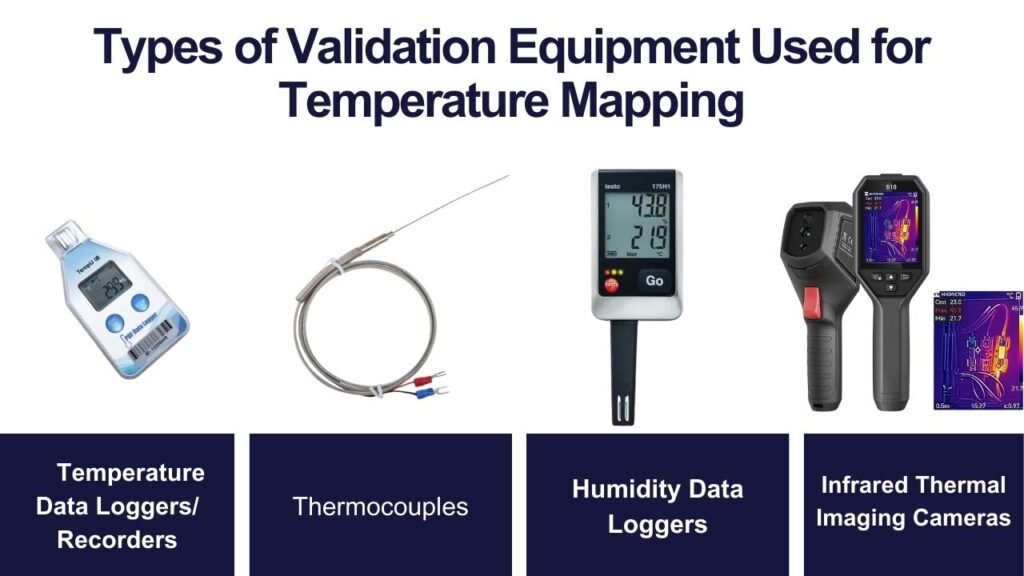
Several types of validation equipment are used for temperature mapping studies. These include:
- Temperature Data Loggers/Recorders: Data loggers are used to measure and record temperature at different points within the storage area. They can be single-use or reusable devices with various features such as accuracy, response time, memory capacity, and range.
- Thermocouples: Thermocouples are temperature sensors that can be attached to a base unit for data collection and analysis. The type and quality of thermocouples affect the accuracy of temperature measurements.
- Humidity Data Loggers: Besides temperature, humidity data loggers are used for temperature and humidity mapping studies. They provide information on both temperature and relative humidity.
- Infrared Thermal Imaging Cameras: Thermal imaging cameras capture the temperature distribution across a wide area, providing a visual representation of hot and cold spots.
The selection of validation equipment depends on the specific requirements of the temperature mapping study, including the type of environment, temperature range, accuracy, and data analysis capabilities.
Sensor Locations and Placement
By considering factors such as strategic placement, uniform distribution, focus on critical areas, height variation, and avoiding direct contact, the guidelines aim to capture a detailed and representative temperature profile. This foundational step is vital for maintaining product integrity, safety, and compliance with regulatory standards, underscoring the significance of precision in temperature monitoring.
Strategic Placement: This involves placing sensors in locations within the environment that are known to experience more significant temperature fluctuations. By monitoring these areas, such as near entry points, windows, or cooling units, you can identify potential problem spots that may compromise the overall temperature uniformity.
Uniform Distribution: Distributing sensors evenly ensures that you get a holistic view of the temperature across the entire area being mapped. This comprehensive coverage is crucial for identifying both hot and cold spots, ensuring that no area is overlooked during the mapping process.
Critical Areas Focus: Prioritizing sensor placement in areas where temperature-sensitive products are stored or critical operations take place helps in closely monitoring the most vulnerable sections of the environment. This targeted approach ensures that any temperature deviations in these key areas are quickly identified and addressed.
Height Variation: Temperature can vary significantly at different heights within the same room due to factors like rising heat or air conditioning flow patterns. Placing sensors at various heights captures this vertical temperature gradient, providing a more accurate and three-dimensional picture of the temperature distribution.
Avoid Direct Contact: Sensors should not be placed in direct contact with products, walls, or cooling units to prevent false readings. Direct contact can lead to localized measurements that do not accurately reflect the ambient temperature of the area, skewing data analysis and leading to incorrect conclusions about temperature uniformity.
Temperature Mapping Considerations
Temperature mapping involves several important considerations to ensure accurate and reliable results. Here are some key considerations to keep in mind when conducting a temperature mapping study:
- Calibration: It is essential to calibrate all temperature sensors, data loggers, and monitoring devices before the mapping study. Calibration ensures the accuracy and traceability of temperature measurements to recognized standards.
- Environmental Factors: Consider the environmental factors that can impact temperature distribution, such as airflow patterns, insulation, proximity to heat sources, or exposure to direct sunlight. These factors can affect the uniformity of temperature within the mapped area.
- Load Conditions: Evaluate the impact of different load conditions on temperature distribution. This includes mapping the area under empty conditions, partially loaded conditions, and fully loaded conditions to assess the temperature variations during different operational scenarios.
- Testing Scenarios: In addition to standard mapping tests, consider specific testing scenarios relevant to your industry or product requirements. This may include door open tests, power failure tests, recovery tests, or other simulated scenarios to evaluate the system’s performance under abnormal conditions.
- Data Collection and Analysis: Ensure proper data collection procedures, including the frequency of data collection, data storage, and data analysis methods. Advanced data analysis techniques, statistical tools, and visualization software can help identify temperature deviations and patterns within the collected data.
- Reporting and Documentation: Generate comprehensive reports that summarize the mapping study’s objectives, methodology, results, and recommendations. The reports should include temperature profiles, identified hot and cold spots, and any corrective actions or improvements needed to ensure temperature control compliance.
By considering these considerations, organizations can conduct more accurate and effective temperature mapping studies, leading to improved temperature control and compliance with regulatory requirements.
FAQ
How Often Should Temperature Mapping Be Conducted?
The frequency depends on various factors, including the type of storage area, changes in storage configurations, and regulatory requirements, but it’s typically recommended to perform annually or after significant changes.
Can Temperature Mapping Identify Equipment Failures?
Yes, by analyzing temperature data, it’s possible to identify patterns that may indicate equipment malfunctions or failures.
What Should Be Done if Temperature Deviations Are Found?
Investigate the cause of deviations, implement corrective actions to mitigate risks, and re-evaluate the area to ensure compliance.
Conclusion
Temperature mapping is a crucial process in GxP environment to ensure the consistent and accurate control of temperature in various storage areas and equipment. By conducting temperature mapping studies, companies can identify any temperature variations, mitigate potential risks, and maintain compliance with regulatory standards.
The temperature mapping process involves understanding regulatory requirements, creating a comprehensive plan, executing the mapping study, and analyzing the findings. The use of appropriate validation equipment, such as temperature data loggers and thermocouples, ensures accurate temperature measurements and data collection.
By implementing temperature mapping protocols and regularly re-qualifying temperature-controlled equipment, companies can ensure the integrity, safety, and quality of their products throughout the supply chain.

